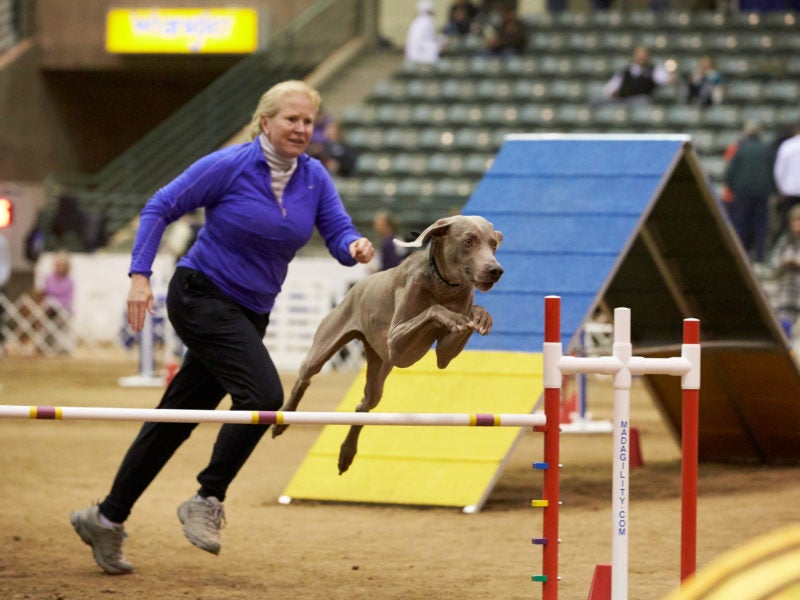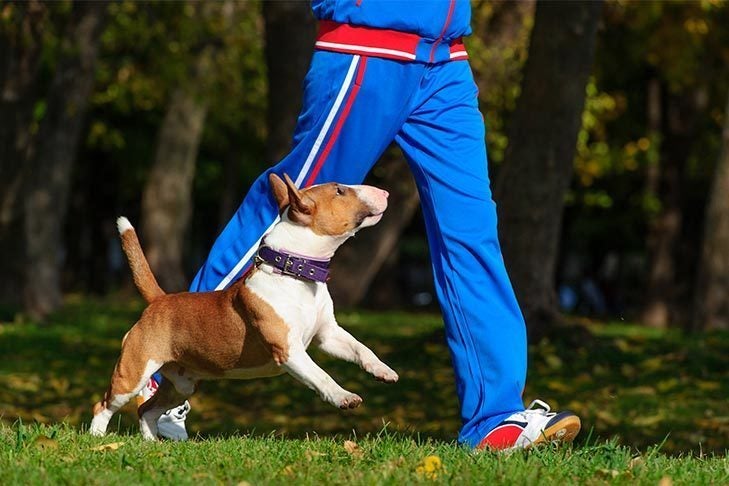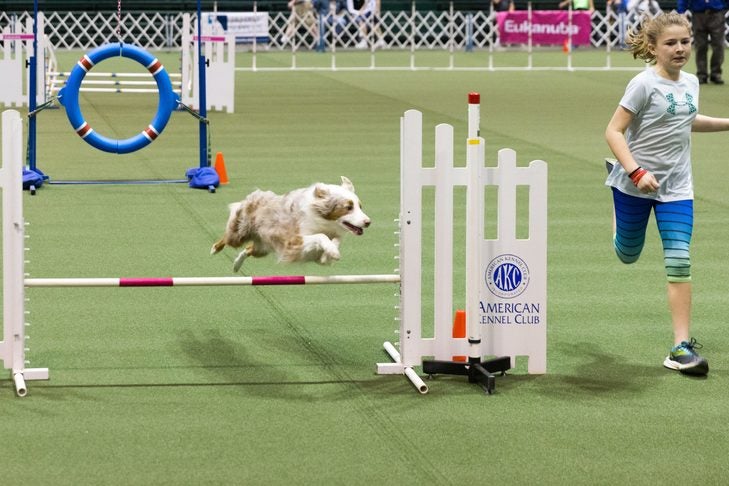
|
Competing in dog sports can be fun and physically challenging for both you and your pup. But, as with other sports, lack of proper fitness and preparation can lead to potential injury.
Dr. James Smoliga has a Doctor of Veterinary Medicine and a Ph.D. in sports medicine and nutrition. While doing some agility training with his dog, Pogo, he noticed that many of the owners were wearing knee braces.
“It’s very easy to get a twisted knee when competing with your dog in agility,” says Dr. Smoliga, a professor in the physical therapy department at High Point University.
While he enjoys agility training for fun, Dr. Smoliga spends his professional time studying athletic performance and injury prevention. He believes in applying what we know about human performance and injury to the world of dog owners competing in agility.
Human Injuries at Dog Agility Competitions
A 2014 study in the Journal of Physical Activity and Health examined injuries among dog handlers. The study found that handlers who were obese were five-and-a-half times more likely to get injured than non-obese handlers. Knees and low back were the areas that handlers injured most, with strains being the most common injury.
“Those injuries can happen by just awkwardly planting your foot in the grass and twisting,” Dr. Smoliga says.
For more sedentary individuals that want to try agility training with their dog, Dr. Smoliga recommends they working to add in physical activity as a first step. Agility can be tricky enough as it is, and it can be made even more difficult by physical limitations.

“Start by going for regular walks with your dog,” he advises. “If you need to lose weight, it can help with that. The more you lose, the less likely you are to get injured.”
Twisted knees are the most common human injury at dog agility competitions. Therefore, it’s important to do exercises that help strengthen the stabilizing muscles around your knees. This includes the quadriceps, hamstrings, and the muscles that cross your hips.
Lower back injuries are also common at agility events. Core-strengthening exercises that keep you stabilized as you move laterally can also help prevent injury.
Strength & Fitness Exercises For Handlers
Dr. Smoliga advises creating a routine of training exercises to improve strength and increase agility and balance. These are key qualities handlers need when they lead their dogs through an agility course.
If you haven’t done much fitness training before, take it slow and just try the basic version of the exercise. If you have a solid fitness baseline and want to take your training to the next level, give the advanced versions a try.
Squats
Basic: Stand with feet hip-width apart, holding on to a chair or railing. As you bend your knees, shift your hips back, as if sitting in a chair. Keep your core muscles tight and your back straight and unhunched. Rise back to a stand. Repeat ten times, and add multiple sets as you get stronger.
Advanced: Don’t hold on to anything as you squat. As you rise from your squat, add a small jump. You can also add weights or a medicine ball for more of a challenge.
Karaokes
Basic: With your arms out, step your left foot in front of your right. Transfer the weight to your left foot, bring your right foot from behind and step right. Then cross your left foot behind your right, transfer the weight to your left foot and bring your right foot around to the right. Continue the pattern for several more steps and then reverse directions.
Advanced: Move quicker until you almost reach running speed. Change directions more frequently.
Torso Stretches
Basic: Move the spine forward and backward, and side-to-side.
- Forward: Standing with your arms at your sides and feet slightly apart, round your shoulders back and tuck your chin. Stretch through your upper back and let your arms hang heavy. Straighten up again and push your shoulders down.
- Backward: To stretch backward, place your hands on your low back for support. Stretch backward slowly as you look up, exhaling for 2–3 seconds. Return to a neutral spine.
- Side-to-side: With your hands on your hips, twist your torso slowly in each direction as you exhale slowly. Try to keep your hips facing forward.
Advanced: Create more explosive versions. Crouch down and jump up, or hold a weight or medicine ball as you twist side to side.
Plank Holds
Basic: Hold a push-up position, but with your knees on the floor. Keep your stomach muscles tight and your back in a straight line. Try holding in increments of 10–15 seconds or more.
Advanced: Hold the plank without dropping your knees, and maintain for as long as two minutes. Try lifting one leg or one hand off of the ground while holding.

Interval Training
Basic: Jog for 10–30 seconds, and walk for one minute in between. Work on increasing the amount of time you’re jogging until you can jog for 2–3 minutes, with 1–2 minutes of walking in between.
Advanced: Jog for 5 minutes to warm up, and run hard (at 80–90 % effort) for 1–2 minutes. Recover with 1–2 minutes of jogging or walking, and repeat the interval 3–5 times.
Don’t Forget To Warm Up
One of the most important things to remember about fitness training is to always warm up properly. Training for agility competitions with your dog is physically taxing on your body. A proper warm-up routine will help minimize the risk of injury.
“To prevent injuries and maximize performance, you want to make sure that all those muscles that cross your hip and knee joints are firing and have been warmed up before your competition,” Dr. Smoliga says.
People are sometimes afraid that a warm-up will tire them out, but in reality, he says, it should wake up your muscles and get you ready to compete. Even just 10 minutes can make a difference.

